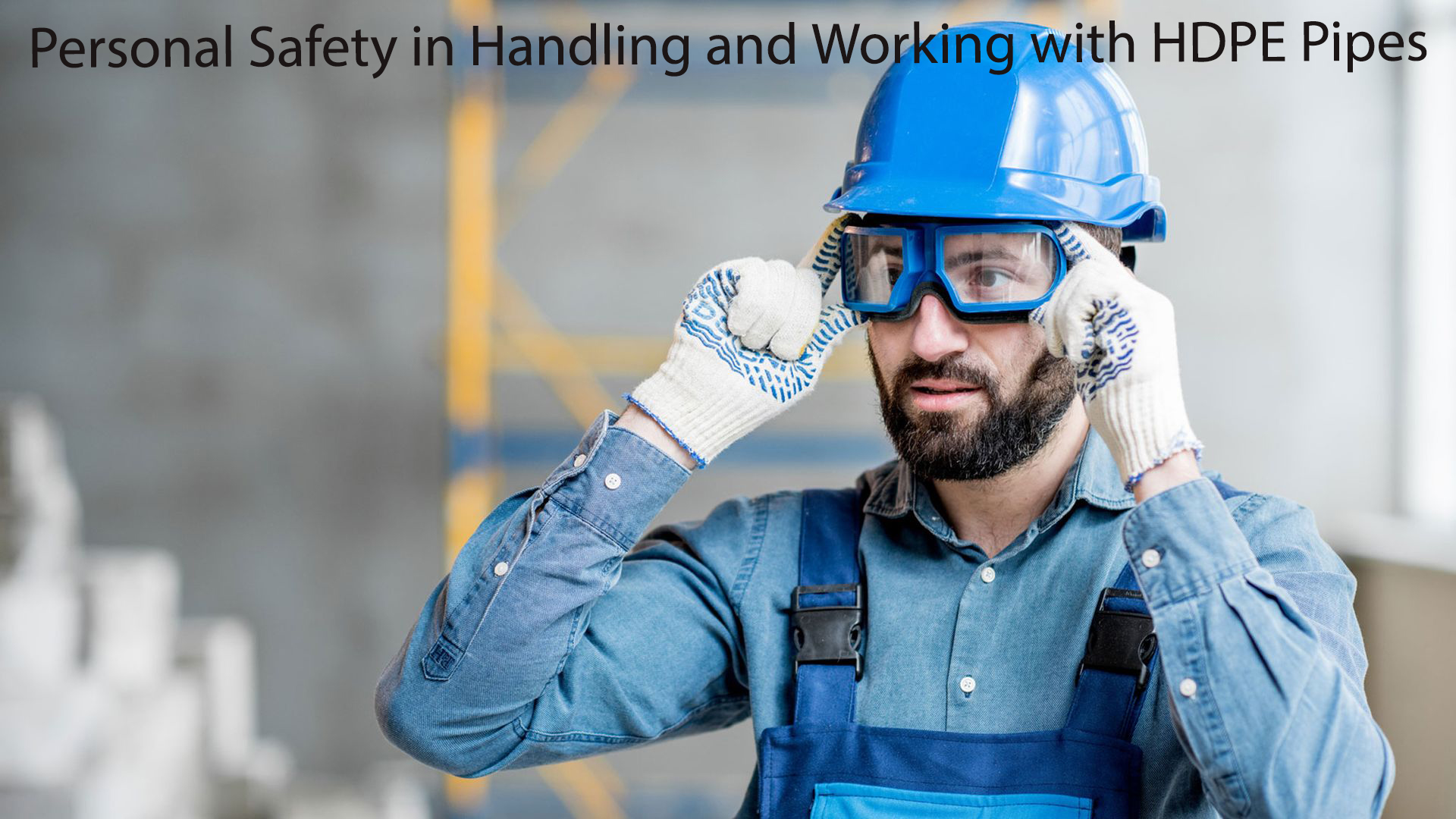Personal Safety in Handling and Working with HDPE Pipes
The use of High-Density Polyethylene (HDPE) pipes in various projects can significantly facilitate transportation and project execution. However, personal safety when dealing with these materials is of utmost importance. This article explores the principles of personal safety in handling and working with HDPE pipes
.

Use of Personal Protective Equipment (PPE):
Throughout the transportation or work with HDPE pipes, adherence to the use of personal protective equipment is essential. Safety helmets, steel-toed safety shoes, gloves, and safety goggles are among the necessary equipment
.
Proper Use of Safety Helmets:
Safety helmets not only protect the head from injuries but also emphasize the importance of using them during pipe loading, unloading, or handling
.
Use of Safety Goggles:
The use of safety goggles with required standards is a crucial measure in reducing the risks associated with working with HDPE pipes, especially during cutting and connecting operations
.
Precision in Pipe Handling:
During the handling of pipes and other heavy equipment, hands should be placed with precision and caution to prevent pinching, gripping, or falling onto the hands
.
Use of Line Tags and Handling Tools:
Line tags and handling tools allow workers to control pipes in a "hands-off" manner, reducing potential hazards associated with manual handling
.
Appropriate Clothing:
Wearing long-sleeved shirts and trousers helps reduce the risks of cuts, bruises, and abrasions. Additionally, it protects against sunburn and environmental hazards
.
Deployment of Environmental Protection Forces:
In workplaces dealing with HDPE pipes, it is advisable to have safety representatives nearby to provide first aid if necessary or participate in issuing safety alerts
.
Assessment and Identification of Workplace Hazards:
Before commencing work, workplace hazards should be thoroughly assessed and identified. These hazards may include unprotected machinery, gases, fuels, heat sources, excessive noise, and electrical lines
.
Conducting Educational and Awareness Sessions:
Regular training sessions on the proper use of personal protective equipment and safety procedures for working with HDPE pipes should be conducted. Employees should be familiar with safety concepts
.
Supervision of Environmental Conditions:
Emphasis should be placed on continuous monitoring of workshop environmental conditions, ensuring the proper implementation of safety guidelines, including the development of specific plans to address any hazards
.
Preparedness for Emergency Situations:
Every individual should have basic knowledge of first aid and CPR. Being prepared to handle emergency situations is of utmost importance
.
Use of Heat Protection Equipment:
When working with thermal welding equipment, protective gear should be used to prevent burns. Avoid clothing that may melt and adhere to the skin
.
Adherence to Industrial Safety Standards:
Always adhere to relevant industrial safety standards related to working with HDPE pipes and stay updated on any possible changes in these standards
.
By following these guidelines, personal safety in handling and working with HDPE pipes can be enhanced, and associated risks can be minimized. These measures play a crucial role in preserving the health and safety of employees
.